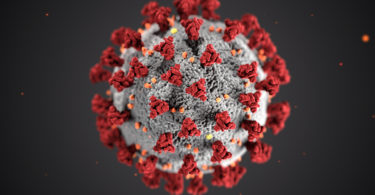
Abstract
NOMOPHOBIA is a psychical stage where an addicted human has a fear or fright of being disengaged from their digital phone.
The locution NOMOPHOBIA narrated in the DSM-IV, was classified as “a phobia of a specific/tangible thing”.
several psychical elements such as self-doubt, low confidence, and extroverted disposition are involved in this problem. The patient used to connect regularly to cell phones.
The thrust of this problem is expanding day by day worldwide. Also, Other psychical problems such as fear to be social, and fit for terror can increase NOMOPHOBIC features. that is very hard to find out if a patient becomes NOMOPHOBIC as a result of dependency on phones or any type of fit of terror or panic disorder presenting with NOMOPHOBIC features.
Since that type of disorder is well treated in homoeohomoeopathy, it will be the right way to treat nomophobia.
KEYWORDS: HomoeoHomoeopathy, nomophobia, homoeohomoeopathy, miasma, repertoire.
ABBREVIATIONS: DSM – Diagnostic and Statistical Manual of Mental Disorders, TRAI – Telecom Regulatory Authority of India, QDMP/TMPD – mobile phone addiction questionnaire/test of mobile phone addiction
Introduction
NOMOPHOBIA is a psychical stage where an addicted human has a fear or fright of being disengaged from their digital phone.[1]
We are attached to each other with phones, providing us with a kind of security.[2]
However, the term “phobia” is a misnomer, as it mostly appears as a type of anxiety disorder.[3]
It is a kind of “overconnectedness syndrome” because constant use to mobile phones does not lead to face-to-face interaction. Another terminology is similar. This is called “technophobia”. It’s similar to how people avoid face-to-face interconnection and remain introverted, regardless of other people. They become depressed later in life.[4]
CAUSES:
The exact cause of nomophobia is unknown.
The phone immediately satisfies and communicates immediately, the patient gets used to it.
This is not a known bug; People do not know about this disease yet. It is new, there is no modification on it. Patients with anxiety and panic disorders were more affected by nomophobia.
NOMOPHOBIA may also act as a substitute for other diseases. So, we have to be very prudent regarding its diagnosis. Some mental disorders can also cause NOMOPHOBIA and vice versa.
The complexity of this condition is very challenging for the patient’s family members as well as for the doctor because NOMOPHOBIA shares common clinical symptoms with other problems. Therefore, NOMOPHOBIA should be diagnosed by exclusion. We need to stay in the real world more than the virtual world. We need to re-establish face-to-face connections among the people. So, we need to limit the use of our cell phones rather than ban them because we cannot escape the force of technological advancement.
The survey reported that most teenagers expressed anxiety when they do not use their cell phones, they kept thinking about their phones. Researchers have proposed certain psychological predictors for suspecting nomophobia in a person, which are: “self-negative views, younger age, low esteem, high extroversion/introversion, impulsivity, and a sense of urgency and seeking”.[5]
According to a study, 61% of people check their phones in the morning after waking up.[6] In a study conducted among undergraduate students in health services, almost 77% of students checked their cell phones more than 35 times per day.[7]
Another study claimed that 50% of nomophobics never switch off their mobile phones.[8]
The researchers evaluated many such psychological factors which are happening to the patient due to mobile use.[6]
SIGNS AND SYMPTOMS
The signs and symptoms seen in a NOMOPHOBIAC patient are-
- Anxiety
- Apprehension
- Respiratory alterations like dyspnoea, and coughing.
- Irritability
- Laziness
- Trembling
- Perspiration
- Agitation
- Absorbed in thoughts.
- Disorientation
- Tachycardia
- Confusion
- Slow mental development in children
TREATMENT AND MANAGEMENT: –
Level 1
Policy and law
There is no restriction on the use of mobile phones in India. One person can use multiple phones. It adds energy to the already existing problem of NOMOPHOBIA. The Telecom Regulatory Authority of India (TRAI) should play an active role by creating a policy/law that a “settings-based approach” should be followed to restrict mobile phones between people. A LAW may be formulated under this law. a minimum upper age limit should be set for mobile use. It will help a lot to reduce the situation.
Values
Parents should motivate their children to participate in outdoor games and religious festivals. It will give them more chances to interact face to face.
Education
Parents must be aware of such psychological problems as NOMOPHOBIA. School authorities should appoint counsellors and health team personnel to educate and deal with such cases.
Cell phone restrictions are strictly enforced in many schools/colleges.
Encouraging social activities
The energy of young people needs to be channelled creatively. Mechanisms can be designed to engage them in physical activities, outings, social interactions, etc.
Level 2 and level 3
Prevention of NOMOPHOBIA
A NOMOPHOBIC person should be identified using a “setting-based” approach by their colleagues/supervisors.
They may be referred for on-site counselling. This way you can reduce the risk of NOMOPHOBIA.
Medical treatment of acute health problems and treating symptoms:
Currently, treatment modalities are very limited because the concept of the disease is relatively new. However, treatment modalities such as cognitive-behavioural therapy combined with pharmacological interventions show promising results. The drugs, tranylcypromine and clonazepam, are becoming quite successful in treating the signs and symptoms of nomophobia.[9]
Cognitive behavioural therapy appears to be very useful because it reinforces autonomous behavior that is independent of techno-dependency. However, this treatment approach is not supported by any randomized control trial.
A mobile phone dependence study among medical graduates was conducted by Dixit et al. About 56% of students replied they feel secure when their phone is in their pocket.[10]
Another promising treatment modality has emerged as the “reality approach”. In this therapy, the patient is encouraged to focus on other behaviours (gardening, painting, playing, etc.) than using cell phones. Medications such as benzodiazepines and antidepressants (in normal doses) are sometimes used in severe cases to control symptoms. A combination of tranylcypromine and clonazepam has been used quite successfully to treat cases of nomophobia. Although these drugs are formulated for anxiety disorders and not directly for nomophobia.[9]
We must remember that NOMOPHOBIA should be diagnosed by exclusion and therefore we must be very careful in investigating, identifying, and treating any hidden pre-existing mental disorders if any.
Certain validated psychometric scales are available for the diagnosis of nomophobia, among which the “mobile phone addiction questionnaire/test of mobile phone addiction (QDMP/TMPD)” scale is popularly used.
Levels 4 and 5
Mental Health Services:
This is of paramount importance in rehabilitation as a person goes through phases of anxiety and depression. After addressing the person’s immediate health and safety needs, a psychosocial assessment using existing psychometric instruments should be recommended. Psychological rehabilitation of addicts needs to be ensured through counselling and parental care.
Caregiving should be provided by supportive and invulnerable parents/caregivers. Counsellors must emphasise anxiety and stress management skills in patients and teach parents about these skills.
Miasmatic background: –
With this problem, the patient will suffer psychologically. His behavior has changed and he suffers from anxiety and panic attacks. Nomophobia is a type of addiction; addiction is an uncontrolled desire, so we will consider it a syphilitic miasma.
Repertory: –
In the repertory, one can find many rubrics related to the symptoms of nomophobia. Some repertoires are stated below:
Mind – sensitive – also noise – phone ringing = ozone
Dreams – memory – weakness of memory – a person with whom he is on the phone; he does not remember knowing = Bungarus-fa.
Dreams – phone= Latrodactus-h, irid-m, gallon-h.
Dreams – Phones – Picking up the phone = Galeocerdo
Generals- ailments from- mobile phone = Bellis p[11]
In homoeopathy, there is no specific treatment for nomophobia and no specific cure for nomophobia. But a patient who has symptoms of any kind, whatever medicine comes, will give to the patient.
Homoeopathic remedies:
There is no particular remedy for nomophobia.
Whatever kind of problem the patient is suffering with, the problem that will come, they will be prescribed a simillimum medicine and the management will tell them how to use the phone less. If the patient has anxiety about the phone, then treatment related to anxiety will be done. The patient will be counseled.
Conclusion:
Earlier people were more social, they used to have direct interactions with each other. But now the environment has changed, and people are becoming dependent on them by using technology. People do not interact directly with each other, they stay connected on social sites like facebook, twitter, instagram, and whatsapp, and this is the reason why he started living more on phone.
NOMOPHOBIA can put a financial strain on a family due to using excessive amounts of data, which is also costly.[12]
Most Indian studies [13,14,15] on nomophobia have been conducted on adults and are limited by small sample sizes and variability in the tools employed. India is one of the largest markets for smartphones, and adolescents are major consumers.
Excessive mobile phone use by adolescents may be associated with internet addiction [16] which can lower life quality in adolescents.
Nowadays people are not paying much attention to their families due to urbanization and nuclear families. and working mothers give phones to their children so that these children get busy and now this recruitment has become more common and due to this the mental development of children is not being done properly. They become irritated, and obstinate by nature, and do not involve themselves in any physical activities.
Today, after college, most children are usually away from home for education or employment. The excessive use of cell phones by parents and their children is a way to gain a mutual sense of security and social control through cell phones.
Nomophobiac prefer virtual interactions and avoid face-to-face interactions. As a result, they have their phone within reach even when they sleep (the phone stays on 24×7). Some of them often look at the phone screen so as not to miss any notification, which is called a “ring”.
These all are factors that make people depend on phones remarkably and they developed nomophobia.
In homoeopathy, we can cure these patients who are suffering from this phobia, and we can prevent this problem from developing.
References:
- IJIP. In. 2016. The International Journal of Indian Psychology, RED’SHINE Publication. Volume 3, Issue 4, No. 82. Inc.:213.
- Leon mejfa A C. Serrano-Pintad I. May 18, 2021. A systematic review on nomophobia prevalence: Surfacing results and standard guidelines for future research. JOURNAL PONE.
3. Jayakumar A. Break free from Nomophobia, and drunkorexia. Mid- day.com. 2008.
4. Bragazzi NL, Del Puente G. 2014. A proposal for including nomophobia in the new DSM-V. Psychol Res Behav Manag;7:155–60.
5. Bianchi A, Phillips JG.2005. Psychological predictors of problem mobile phone use. Cyber Psychol Behav;8:39–51.
6. Walsh SP. 2010. Needing to connect: The effect of self and others on young people’s involvement with their mobile phones. Aust J Psychol.;62:194–203.
7. Bivin JB, Mathew P, Thulasi PC, Philip J. 2013. Nomophobia-do we really need to worry about? Rev Prog;1:1–5.
8. Philip C. 2019 Jan 25 My Name is Mo R, and I am a Nomophobia.
9. King ALS, Valença AM, Silva AC, Sancassiani F, Machado S, Nardi AE. 2014. “Nomophobia”: Impact of cell phone use interfering with symptoms and emotions of individuals with panic disorder compared with a control group. Clin Pract Epidemiol Mental Health;10:28–35.
10. Dixit S, Shukla H, Bhagwat AK, Bindal A, Goyal A, Zaidi A, et al. 2010. A study to evaluate mobile phone dependence among students of a medical college and associated hospital in central India. Indian J Community Med ;35:339–41.
11. Schroyens F. 2016. Augmented clinical synthesis repertoriumhomoeohomoeopathic synthetic. B JAIN PUBLISHERS(P) LTD;9.1th ed. Noida.
12. Nomophobia | Revolvy 2019 Jan 25.
13. Aggarwal M, Grover S, Basu D. 2012.Mobile phone use by resident doctors: Tendency to addiction-like behaviour. Ger J Psychiatry; 15:50–5.
14. Pavithra MB, Madhukumar S. 2015. A study on nomophobia-mobile phone dependence among students of a medical College in Bangalore. Natl J Community Med.; 6:340–4.
15. Singh B, Gupta R, Garg R. 2013. Mobile phones; A boon or bane for mankind? Behavior of medical students. Int J Innov Res Dev; 2:196–205.
16. Ha JH, Kim SY, Bae SC, Bae S, Kim H, Sim M, et al.2007. Depression and internet addiction in adolescents. Psychopathology.;40:424–30.
ABOUT THE AUTHOR: –
Dr Vandana Gupta, Junior Resident Doctor, Dept. of Case Taking & Repertory
State National Homoeopathic Medical College and Hospital, Lucknow.





